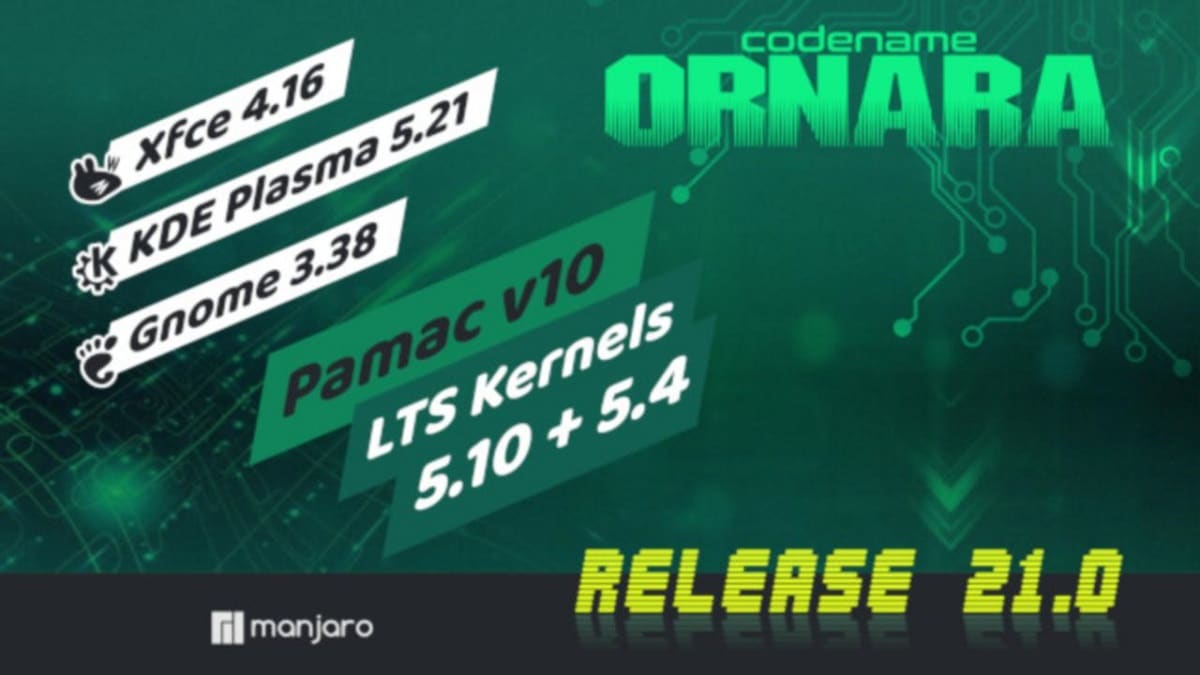
Few days ago Manjaro Linux 21.0 New Update Release Released that as many of your users will know, Manjaro is a distribution based on Arch Linux and it is rolling release (no new versions, only updates).
This is why the purpose of these updates is to prevent new users and reinstallers from having to download large amounts of GB of system package updates.
The layout stands out for the presence of a simplified installation process and easy to use, support for the automatic detection of hardware and installation of the necessary drivers for its operation.
To manage repositories, Manjaro uses its own BoxIt toolkit, designed in the same way as Git. The repository is supported on an ongoing basis, but new versions go through an additional stabilization stage.
In addition to its own repository, there is support for using the AUR (Arch User Repository) repository. The distribution comes with a graphical installer and a graphical interface to configure the system.
Main new features of Manjaro Linux 21.0
In this new update of Manjaro Linux 21.0 the system image Linux kernel has been updated to version 5.10 and the main edition that ships with the Xfce based user environment it has been updated to use Xfce version 4.16.
While the GNOME-based edition discontinued the GNOME initial setup wizard, that generated mostly negative user reviews, in addition to GNOME 3.38 continues to ship as in the previous version and with improved support for the PipeWire media server, as well as replacing frequent views and all previously divided applications with a single customizable and consistent view that allows applications to be reordered and organized in custom folders.
The edition based on KDE offers a new version of the Plasma 5.21 desktop and uses a new Application Launcher implementation, that makes it quicker and easier to find, access and run applications. The new launcher features two panels for easy program placement and comes with enhanced keyboard, mouse, and touch input, increasing accessibility across the board.
Another improvement that I include in the KDE edition is Plasma System Monitor a new application to monitor system resourcesIn addition, a new page was added to the System Settings: Plasma Firewall settings. This configuration module allows you to install and configure a firewall for the system. The layout of the Media Player widget has been improved and now includes the list of applications currently playing music in the header as a tab bar.
On the other hand, the Calamares installer has added recommendations to choose the preferred languages and the keyboard layout based on the determination of the user's location from the GeoIP base.
Finally, if you want to know more about it of this release you can check the details In the following link.
Download Manjaro Linux 21.0
For those who are interested in being able to obtain the new version of Manjaro, can get the system image by going to the official website of the distribution and in its download section you can find the links to download any of the flavors of your liking or the community versions that add other desktop environments or window managers.
Manjaro comes in live versions with KDE (2.7 GB), GNOME (2.6 GB) and Xfce (2.4 GB) graphical environments. Builds with Budgie, Cinnamon, Deepin, LXDE, LXQt, MATE, and i3 are further developed with community participation.
The system image can be recorded by:
Windows: They can use Etcher, Universal USB Installer or LinuxLive USB Creator, both are easy to use.
Linux: The recommended option is to use the dd command, with which we define in which path we have the Manjaro image and also in which mount point we have our usb:
dd bs=4M if=/ruta/a/manjaro.iso of=/dev/sdx && sync